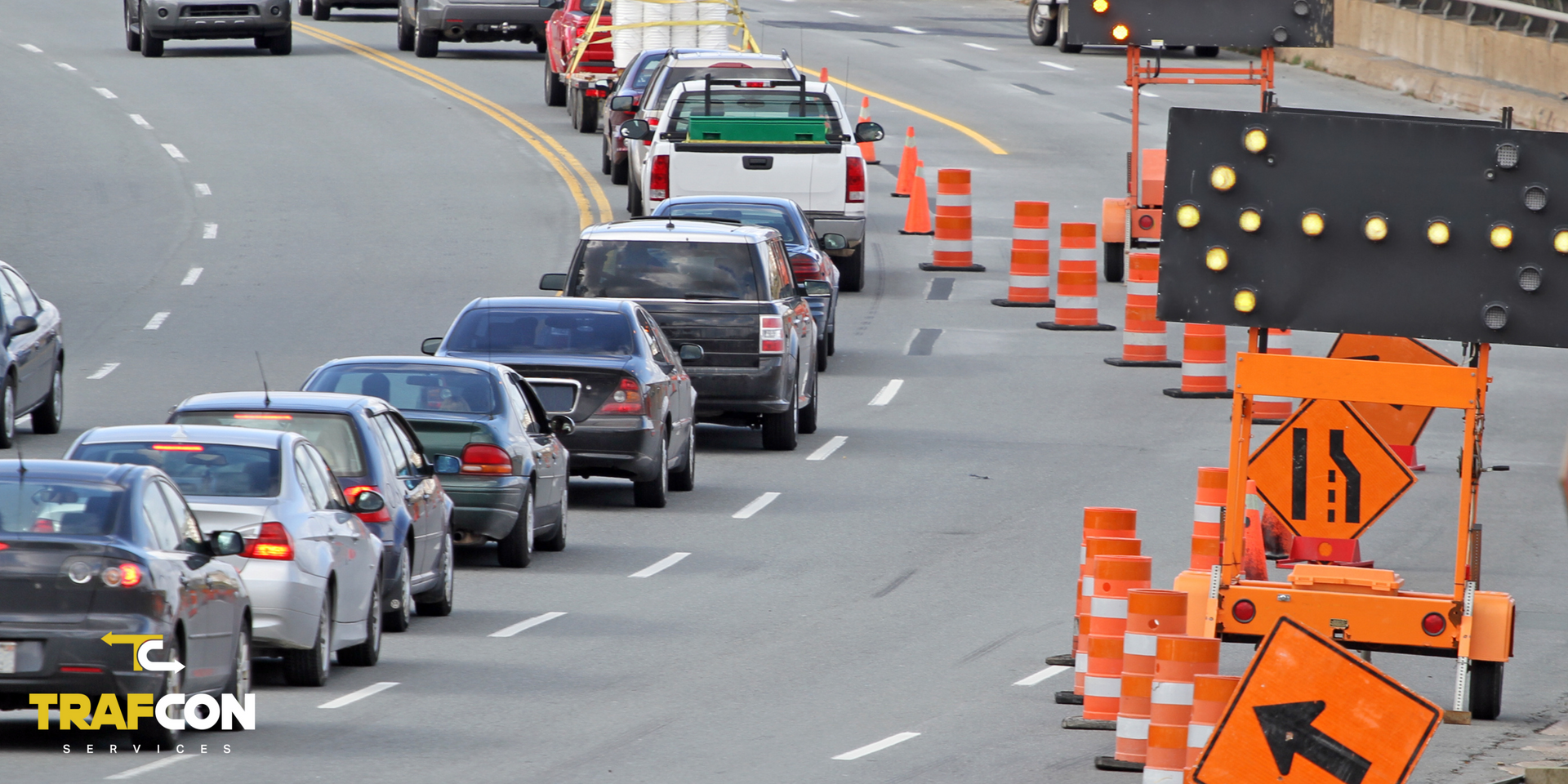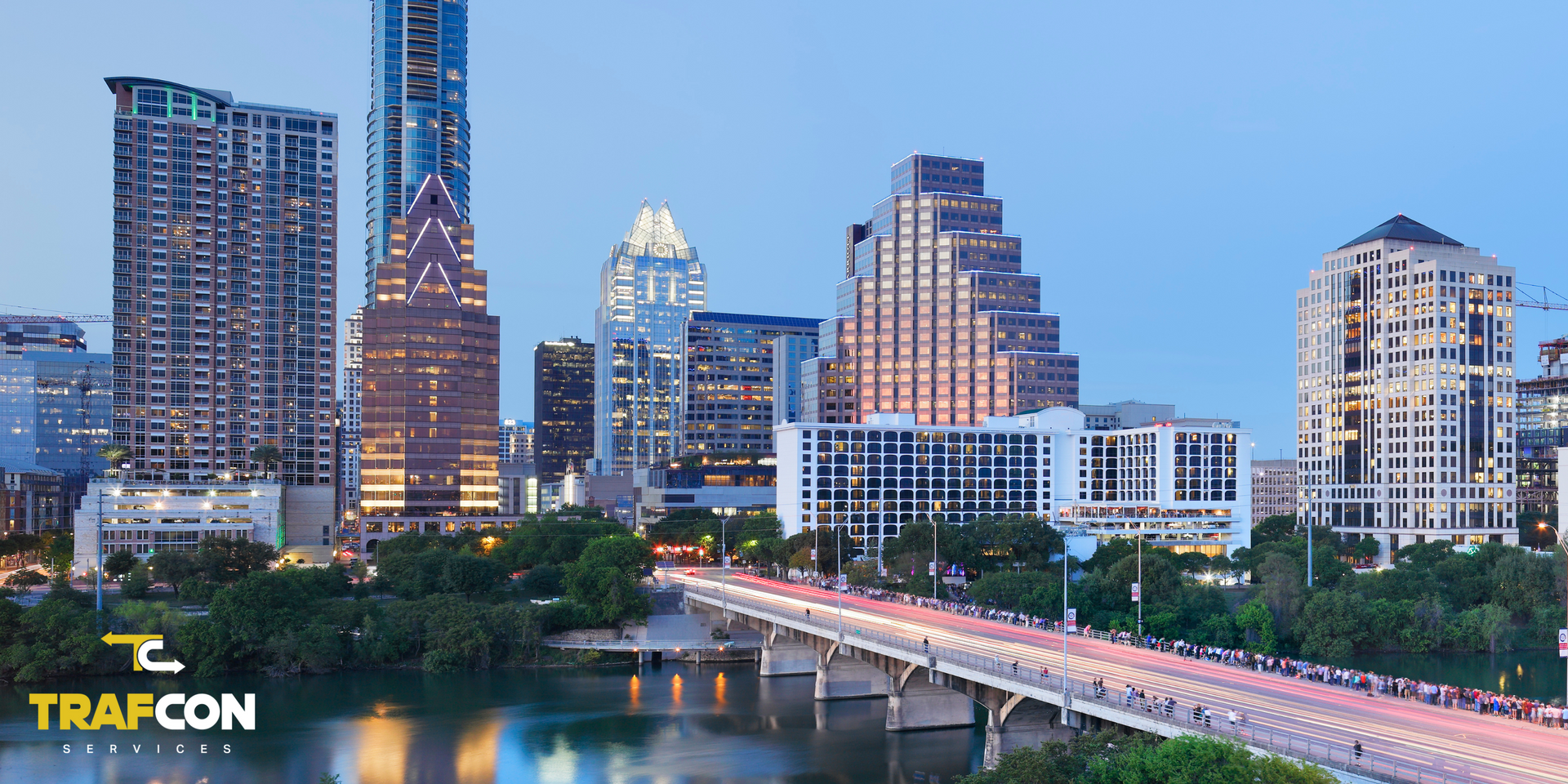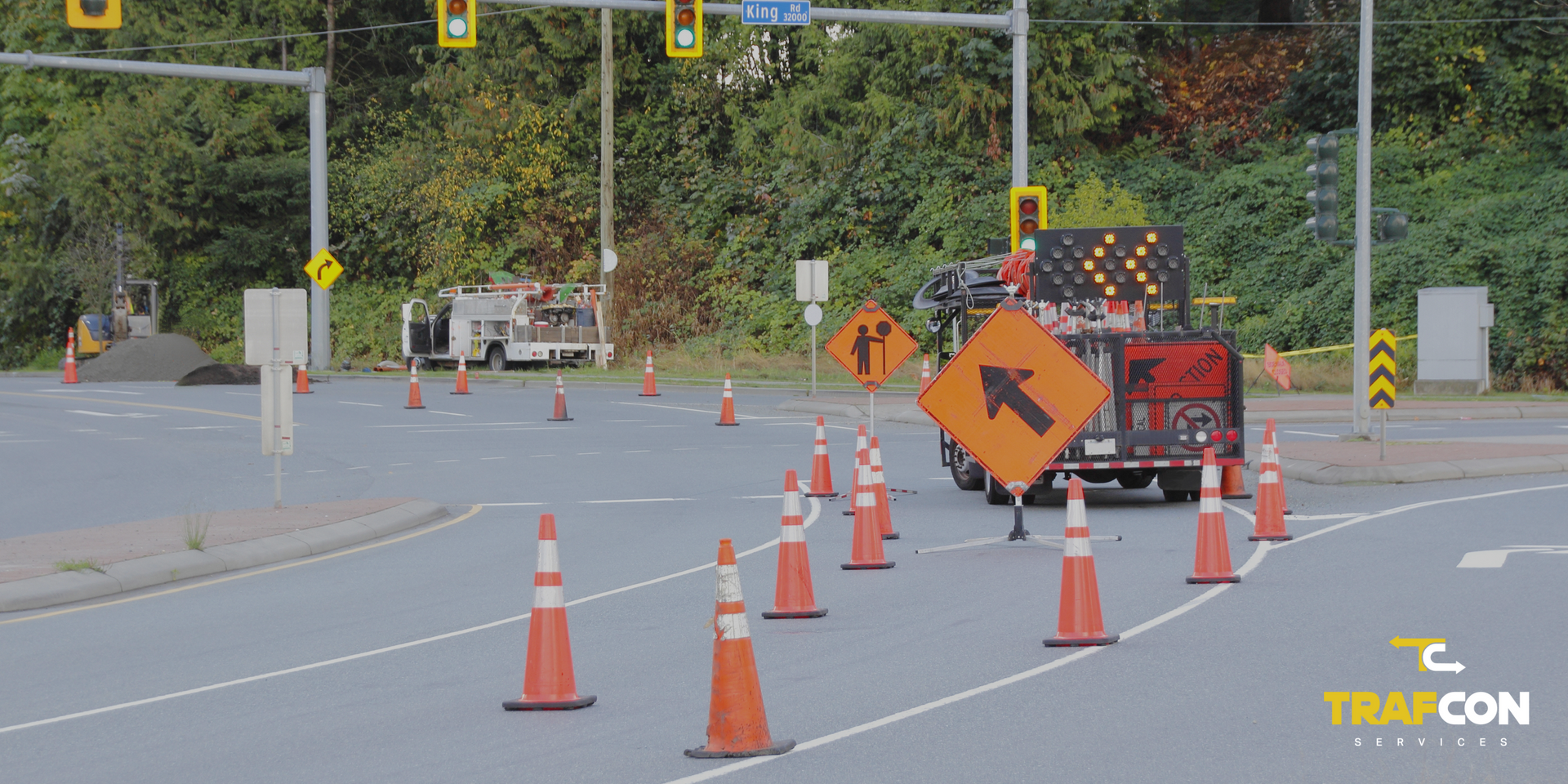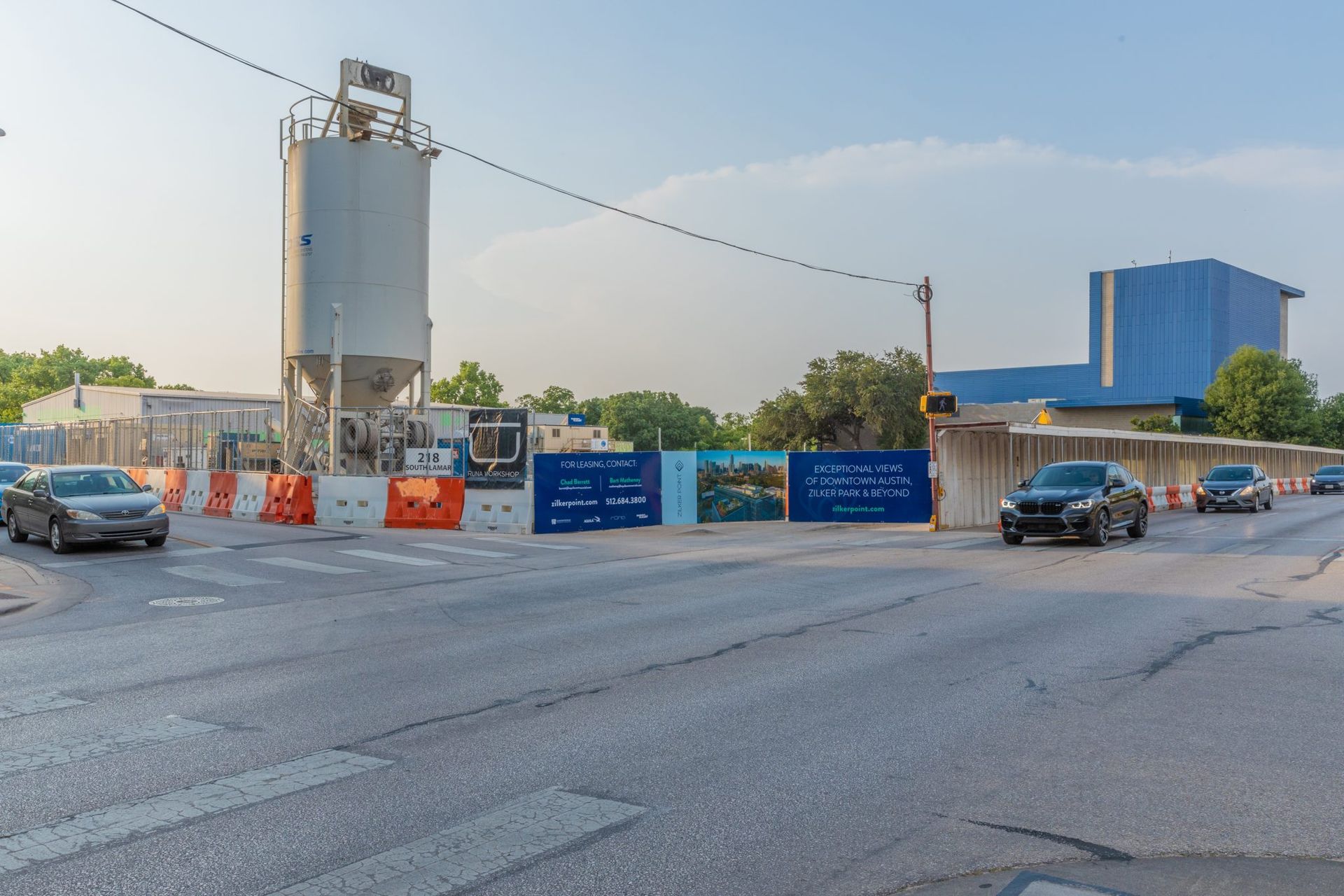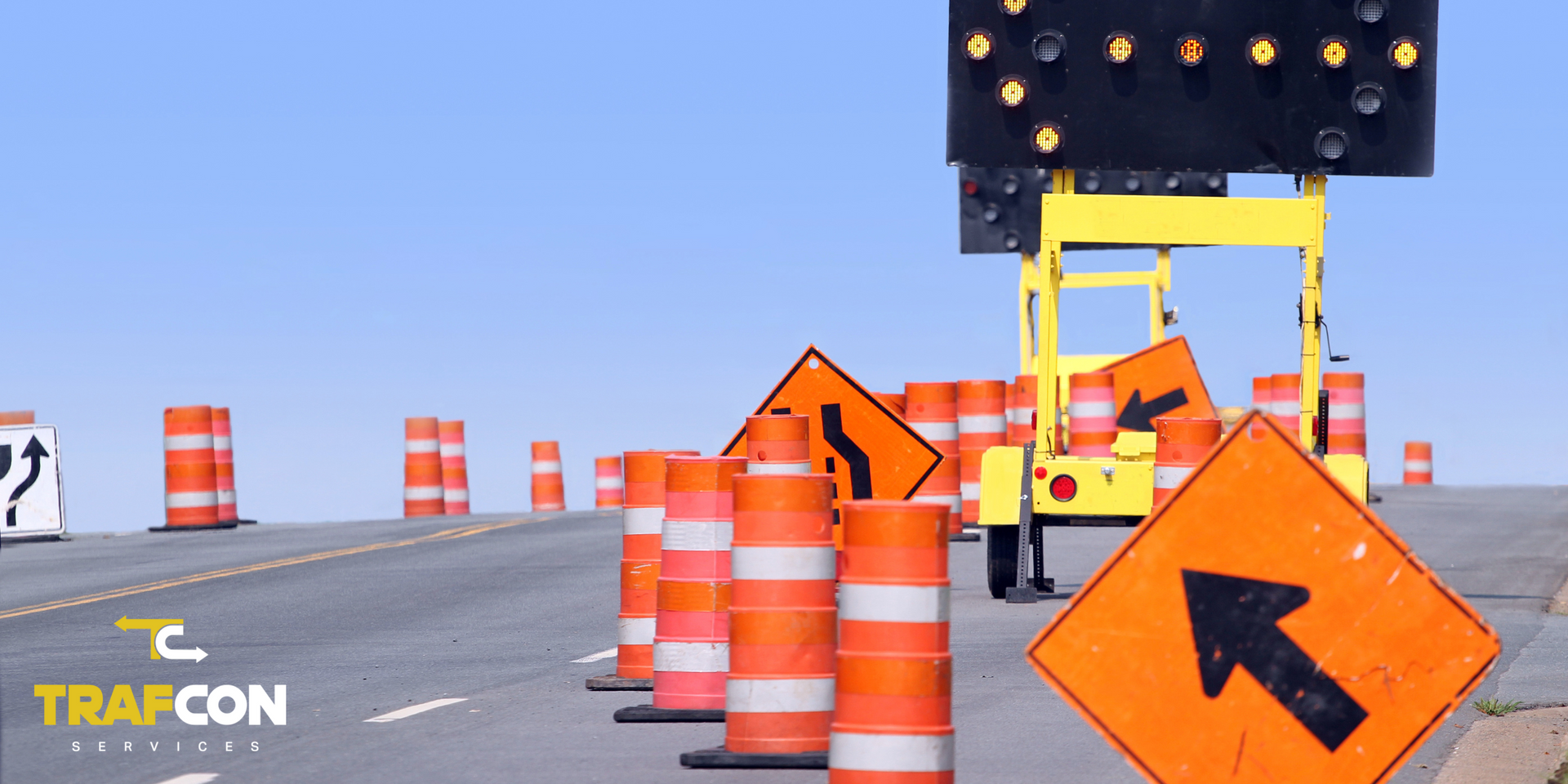
Top Traffic Control Device Tips You Need to Know
Traffic control devices play an essential role in ensuring the safe and efficient management of traffic on our roadways. These tools, which include common traffic control devices such as signals, signs, and markings, not only guide drivers, but also significantly contribute to reducing accidents and promoting overall road safety.
In this article, we delve into the different categories of traffic control devices used as a pivotal element in controlling vehicle flow while outlining their functions and impact on enhancing traffic management strategies for better safety outcomes.
Key Takeaways
- Traffic control devices, such as traffic control signs, signals, and barriers, are essential for maintaining road safety and efficiency by regulating traffic flow and preventing accidents.
- The Manual on Uniform Traffic Control Devices (MUTCD) sets national standards for traffic control devices to ensure uniformity and compliance, with the latest edition taking effect in early 2024.
- TrafCon Services offers specialized traffic control design and consulting in Austin, Texas, providing tailored solutions and meeting local regulatory requirements. Call Chase Dupuis at (512) 994-7830 for a free site walk for assessing traffic control needs.
Traffic Control Devices Introduction
Traffic control devices serve as essential components, much more than just fixtures on the roadside. They are critical for promoting orderly and safer construction zones while enhancing traffic efficiency, as they control traffic and structure how vehicles navigate through congested points such as intersections, averting disorderly flow in heavily trafficked areas.
They play a significant role in reducing congestion, which decreases accident risks and ensures a more streamlined vehicle progression. For an effective traffic management system to work smoothly, these systems must be heeded with prompt response times and due regard for fellow road users – making them crucial tools within our fast-moving society.
In every setting, from active urban crossroads to tranquil residential lanes, traffic control devices fulfill various key roles.
- They sustain uninterrupted flows of traffic.
- They guide drivers and improve vehicular movement patterns.
Security improvements come from their ability to increase driver awareness about ongoing conditions on the roads along with impending perils.
The implementation of appropriate traffic control measures can lead to transformative results when considering safe travel across all kinds of roadway networks—including ensuring that any given control device is thoughtfully engineered for optimal performance.
Understanding Traffic Control Devices
Traffic control devices, which encompass a range of traffic control tools like transmitters, receivers, responders, signs, and lights, are crucial elements that maintain the structure within our roadway networks. These instruments serve as conductors for the flow and regulation of vehicular movement to prevent disorder at busy junctions and other high-traffic areas. By mitigating congestion on roads, they play a significant role in minimizing the likelihood of accidents while enhancing efficient transit.
At intersections or zones with dense traffic volume where chaos is likely without them, these devices act as pivotal mechanisms safeguarding orderly progression. They significantly contribute toward averting gridlocks on streets by guiding vehicles appropriately thus assisting in maintaining smoothness in traffic flows.
The assortment of physical markers like signage and signal lamps combined with advanced electronic systems constitute integral components for steering vehicle movements along paths intended to foster optimized driving patterns. Not only from a functional perspective but also safety-wise, their presence is vital across diverse landscapes including urban centers as well as rural territories guaranteeing orderliness heightened security standards plus amplified efficacy pertaining to road utilization thereby underlining their indispensability concerning overall transportation infrastructure management strategies.
What Are Traffic Control Devices?
Traffic control devices are pivotal in the regulation, guidance, and management of traffic flow. These include a variety of markers, signs, and signal devices. The Federal Highway Administration defines them as any sign, signal, marking or device placed on or adjacent to streets or highways by authority of a public agency to direct or warn road users.
These traffic management tools have several distinctive features.
- Their installation takes into account specific colors, shapes, and sizes that correspond with their intended function.
- Commonly located alongside roadsides and other public thoroughfares for enhanced visibility and effective oversight over vehicular movements.
- They are deliberately situated for maximal efficiency in performance.
By providing clear visual signals and directions through these traffic control mechanisms, they help convey critical information necessary for safe driving behavior, allowing motorists to make well-informed choices on the roadways.
Importance of Traffic Control Devices
The maintenance of safety and traffic flow hinges on traffic control devices. They maintain order during high-traffic times by communicating when it is safe to drive or stop, enhancing overall safety. These devices, orchestrating traffic movement and order, prevent chaos at intersections and other areas of high traffic.
Proper maintenance of road signs and other traffic control devices is vital for their effectiveness and ensuring road safety. These devices help eliminate traffic gridlock, decreasing the chances of accidents and helping drivers focus. Without them, motorists and pedestrians would be at greater risk, especially in high-activity zones and urban areas.
Common Types of Traffic Control Devices
Various traffic control devices are employed to direct and manage the flow of vehicles and pedestrians, each designed for a distinct function.
Key forms include:
- Obstacles
- Traffic signals
- Signs for traffic management
- Markings on the road surface
Together, these elements contribute to maintaining orderly and secure transportation pathways for everyone using the roads, whether they’re behind the wheel or on foot. Failure to comply with these devices can result in a traffic ticket, emphasizing the importance of adhering to traffic control measures for safety and legal compliance.
Traffic Signs
Traffic control is an essential element in the operation of road networks, and traffic control signs are fundamental tools for managing it. These regulatory signs govern lawful conduct on public roads by delineating proper behavior at intersections, indicating permitted parking or stopping locations, marking transitions to different speed limits, and designating allowable travel directions. Speed limit signs, no-entry indicators, and one-way markers serve as prime examples of such directives.
Parallel to these imperative indicators are warning signs designed with safety at their core. They alert motorists about imminent hazards like animal crossings or winding roads ahead—measures pivotal for minimizing risk on the roadway. Similarly crucial stop signs mandate drivers to halt entirely before proceeding through an intersection only when conditions permit safely doing so—a measure instrumental in averting accidents.
To facilitate orientation and awareness en route to various destinations, guiding informational signage provides a beacon pointing toward necessary facilities along a traveler’s path. Details regarding routes exist alongside listings for exits available and notices for stops that offer restrooms or refreshments including gas stations—all punctuated with arrows leading towards local sites of interest.
By directing attention toward key points along travelers’ paths using such informative placards not only enhances trip efficiency but also contributes significantly to enjoyment throughout journeys taken by vehicle users who benefit from clear guidance presented via said postings.
When strategically placed within environments like parking lots featuring concentrated pedestrian activity combined with unusual vehicular movement patterns, traffic control signals play an additional role—they can act preventively against possible infringements that may result in receiving unwanted legal citations related directly to failure adhering strictly regulated behavioral expectations while driving amidst shared spaces governed under specific rules made evident through prominently visible restriction reminder limit notices duly installed thereabouts.
Traffic Signals
The administration of traffic movement at crossroads is dependent on the implementation of traffic control signal mechanisms. Conventional traffic signals encompass red, yellow, and green lights, with supplemental cues such as lane-specific indicators and flashing lights to guide vehicles. These signals are critical for delineating moments to halt, give way or proceed which in turn significantly diminishes instances of conflict at intersections as well as the likelihood of crashes.
Signals designed for pedestrian use are pivotal in signaling when it’s permissible for individuals on foot to traverse within marked crossing zones thereby ensuring their safety along with that of vehicular occupants. The contribution these signals make is invaluable. They help avoid mishaps by promoting a systematic progression of both pedestrians and cars. They assist in orchestrating movements effectively while preventing run-ins amongst road users hence bolstering overall security measures related to traffic.
Pavement Markings
Pavement markings encompass a variety of road and curb symbols, lines, patterns, reflectors, or words that are essential for directing and controlling the flow of both vehicles and pedestrians. Their main function is to delineate lanes, indicate appropriate stopping points at intersections, and thus play an indispensable role in maintaining orderly traffic movement. These markings provide vital guidance to drivers and pedestrians alike by minimizing confusion and preventing disorder on thoroughfares.
These markings not only define permissible uses of different parts of roadways such as stop lines, lane markers including turn lane arrows, but also contribute significantly to safe driving conditions. Within parking areas specifically they manifest as stall indicators showing where cars should park, directional arrows guiding vehicle movements, demarcations for stop positions before crossing zones, specific path separators like turn lanes, pedestrian crossings known as crosswalks or zebra stripes. Plus designated spots marked especially for persons with disabilities’ use. At night-time or during poor visibility conditions reflective type pavement inscriptions aid vehicular navigation ensuring additional safety measures are met.
By distinctly marking each travel channel along with incorporating barriers when necessary, these ground inscriptions work tirelessly to prevent mishaps from occurring by delivering clear visual cues about how adjacent traffic flows need to be conducted safely alongside one another – a factor exponentially important amidst densely trafficked locales.
Barriers and Channelizers
Barriers and channelizers are critical in guiding the flow of traffic and ensuring pedestrian safety by signaling dangers and preventing accidents. These instruments are vital for safeguarding individuals on roadways as well as at construction locations. In areas with high levels of activity, such items as fences, guardrails, and concrete barriers effectively separate vehicles from both ongoing traffic and workers onsite. By rerouting motorists away from construction zones, these barriers temporarily close off a lane or a section of the street.
For temporary obstacles or during construction periods, cones and delimiters are practical solutions to manage hazards effectively. They act as short-term guides to direct motor vehicles properly while simultaneously promoting public safety.
The utility range for cones and delimiters includes but is not limited to:
- Restricting automobile entry onto expressways
- Indicating when work areas commence or conclude
- Steering pedestrians along with automobiles around potential risks at worksites
- Regulating vehicle movement within parking lots, adjacent to schools, or during special events
Barricades classified under Types 1 through 3 have similar functions—enabling them to steer clear of any vehicular presence away from hazardous conditions associated with construction sites. They’re useful too within lot parking structures beside institutions where education occurs including highways vicinity even around various event gatherings thus conducting an organization-prioritized control over traffics particularly in temporal circumstances can benefit greatly using methods consist of deployment barricading apparatuses delineators alongside cone types mentioned prior details provided hereof.
Attenuators specific to managing velocities reduce damage inflicted upon impacts involving automotive transportations—which strategically placed bollards plus jersey-type enclosures amplify controlled navigations enhanced preservations throughout areas designated typically garages providing perceptible solidified define separations aiding general traveler securities operates conjunction worker site professionals welfare measures consistently accounted in-line factors considered.
Regulations Governing Traffic Control Devices
Uniformity and adherence to strict regulations are imperative for the utilization of traffic control devices across the United States. The Manual on Uniform Traffic Control Devices (MUTCD) sets forth guidelines that encompass a wide range of traffic management tools, from traffic signals to road markings. Deviation from these established standards may lead to forfeiting federal-aid financing and heightened legal liabilities.
Federal Guidelines: MUTCD
The MUTCD has established uniform national guidelines for all traffic control devices to ensure consistency across public and private roadways accessible to the general public. On December 19, 2023, a Final Rule was issued adopting the 11th Edition of the MUTCD, set to come into effect on January 18, 2024. Within two years following this date, states are required to implement this latest edition as their official standard for managing traffic control devices.
Issued by the Federal Highway Administration (FHWA) within Title 23 of the Code of Federal Regulations (CFR), Part 655, Subpart F is where one can find documentation regarding updates made regularly in response to emerging safety technologies and innovative techniques in traffic management. These periodic revisions guarantee that our system’s approach towards regulating and guiding vehicular movement remains relevant with ongoing advancements related to effective traffic control measures.
State and Local Regulations
State and local highway authorities in Austin, Texas, consult the MUTCD to harmonize their traffic control device regulations with those at the federal level. While they keep in line with overall standards for consistency, these agencies can modify MUTCD guidelines as necessary to resolve regional safety and functional problems specific to Austin. They also have the authority to introduce supplementary rules or criteria that support and tailor-fit the MUTCD’s general framework for local requirements.
In addition to the MUTCD, the City of Austin Transportation Criteria Manual (TCM) serves as a critical reference for local traffic control decisions. This manual provides detailed guidelines and standards specific to Austin, ensuring that any local adaptations or contradictions to the MUTCD are addressed with precision and relevance to the city's unique needs. The TCM is often the city's go-to resource for resolving any discrepancies with the MUTCD, ensuring that all traffic control measures are optimally suited to Austin’s infrastructure and safety requirements.
Distinct traffic control solutions are applied by various local jurisdictions in Austin, responding to unique area-based conditions on roadways. This adaptability supports crafting customized traffic management strategies aimed at enhancing security and efficiency specific to the city's demands.
Impact of Traffic Control Devices on Road Safety
Traffic control devices are essential for not just guiding vehicles, but also in improving their movement patterns. They contribute to increased safety, lessen the gravity of accidents, and help lower traffic jams, thereby aiding both motorists and pedestrians alike. These systems efficiently manage traffic flow and minimize conflicts and possible collisions at crossroads by effectively regulating vehicular activity.
Reducing Accidents
By reducing accidents and injuries, traffic control systems safeguard drivers, passengers, and pedestrians. The use of traffic control devices reduces the severity of accidents by making drivers more aware of how traffic should flow. The MUTCD contains minimum standards and provides guidance for traffic control devices, helping to reduce crashes and congestion, and improving transportation efficiency.
Rumble strips are used on long road stretches to help drivers stay alert and avoid accidents. When placed properly, traffic attenuators can save lives in and around construction zones. Traffic signs contribute to safety by protecting people from danger and property from damage in the event of a collision.
Enhancing Pedestrian Safety
Safety features for pedestrians include:
- Crosswalk pedestrian signals serve to inform individuals when crossing is secure, thus elevating their protection.
- In both school zones and residential neighborhoods, signs dictating speed limits aid in mitigating accident risks involving those on foot.
- Signs that provide warnings about nearby pedestrian crossings prompt vigilance among motorists, significantly aiding in the safeguarding of pedestrians.
Traffic bollards offer a defense against vehicular impacts by serving as robust obstructions. These strategies are vital to preserving pedestrian welfare, particularly within regions heavy with traffic and urban environments.
TrafCon Services: Your Local Expert in Traffic Control Design
Specializing in customized solutions for traffic control, TrafCon Services stands out as Austin, Texas’s leading design and consulting firm. They concentrate on delivering superior quality services in the realm of traffic control planning and consultation, aiding customers to manage local regulatory intricacies with ease while ensuring their specific needs for controlling traffic are addressed efficiently.
Why Choose TrafCon Services?
TrafCon Services stands out from many competitors in the industry by focusing exclusively on traffic control. They are committed to providing customized solutions that cater specifically to the needs of their clientele within Austin, Texas and its vicinity. This dedication is evident in their assistance with navigating through Austin’s Right of Way Management Approval Network (ROWMAN) for clients.
Employing a stringent quality management and operations process, TrafCon Services upholds superior standards, delivering top-quality projects without imposing additional expenses associated with certification. Adhering to ISO 9001 compliant procedures positions them as the premier consultant expert for Traffic control design & permitting in not only Austin but also across nearby regions.
Free Site Walk Offer
TrafCon Services is committed to assisting local business proprietors by offering a complimentary on-site evaluation aimed at gauging their specific needs for traffic control. This opportunity equips entrepreneurs with a clearer understanding of what is necessary for managing their traffic control demands, along with tailored recommendations to address those requirements.
Take advantage of TrafCon Services’ offer and arrange your FREE site walk now, so you can be confident that your enterprise’s needs for effective traffic management are being fully addressed.
Contact Information
Should you have any questions or wish to arrange a meeting with TrafCon Services, please utilize the contact information that follows.
You can reach us at:
TrafCon Services
Chase Dupuis
Examples of Traffic Control Devices in Austin's Local Attractions
Overflowing with cultural significance and historical richness, Austin, Texas, is a magnet for both inhabitants and visitors due to its assortment of distinctive local attractions. Spanning an impressive 351 acres, Zilker Park is celebrated as one of the most beloved green retreats within Austin’s limits. It boasts enchanting botanical gardens alongside the iconic Barton Springs Pool. As a central venue for recreational pursuits, Zilker Park also stages key events such as the renowned Austin City Limits Music Festival and the playful Austin Kite Festival, cementing its status as a lively epicenter for community gatherings.
Traffic control devices play a crucial role in managing the influx of visitors to Zilker Park, especially during major events. Strategically placed signals, signs, and barriers help guide both vehicular and pedestrian traffic, ensuring safety and smooth flow throughout the park.
To these locales is Lady Bird Lake, which presents a diverse range of watercraft rentals that include kayaks, canoes, and stand-up paddleboards for aquatic adventures. Encircling this body of water is an extensive hike-and-bike trail adorned with picturesque landscapes perfect not just for relaxing walks but also for energizing runs. With multiple access points like IH 35 and East Avenue or the easily navigable Festival Beach Boat Ramp available to boating aficionados, it serves as a sanctuary amidst nature.
The hike-and-bike trail around Lady Bird Lake is equipped with various traffic control devices, including pedestrian signals and signage, to ensure the safety of joggers, cyclists, and walkers. These devices help manage the interaction between different trail users and maintain an orderly flow.
Showcasing vibrant street scenes are neighborhoods such as South Congress and East Austin, known respectively for their eclectic mix of shops, live music venues, and some of the best dining spots in the city. South Congress, often referred to as SoCo, is home to iconic eateries like Home Slice Pizza, Perla's Seafood & Oyster Bar, and the famous Jo's Coffee. East Austin offers a unique culinary experience with places like Franklin Barbecue, known for its mouthwatering brisket, and Launderette, a converted laundromat serving New American cuisine.
By contrast, a visit to downtown Austin will reveal countless art galleries, historic landmarks, and renowned restaurants such as Uchi, a contemporary Japanese dining spot, and Moonshine Patio Bar & Grill, known for its innovative take on Southern comfort food.Witness in itself what music Austin has composed of versatile melodies deeply connected with the city’s soul, which attracts both those who call it home and exotic travelers searching for offbeat tracks. Experience firsthand these quarters which truly capture Austin’s essence in tangible yet infinitely memorable ways, drawing crowds from everywhere endlessly enticed by what they offer.
Traffic control devices are essential in these bustling neighborhoods to manage the high volume of both vehicular and pedestrian traffic. Traffic signals, crosswalks, and signage are strategically placed to ensure safety and efficiency, making these vibrant areas accessible and enjoyable for all visitors.
Summary
Devices for controlling traffic are essential in ensuring the safety, orderliness, and efficiency on roads everywhere. This array of devices includes everything from signals and signs to barriers and line markings that direct vehicles along their way. Recognizing how each component contributes to an elaborate system allows us to understand just how critical they are for maintaining safe roadways. In Austin, Texas, TrafCon Services is recognized as a leading provider of design solutions and consulting services in the realm of traffic control.
The company excels by offering customized support designed specifically to address the needs inherent within local communities it serves. Adhering strictly to regulatory standards shows their dedication to quality assurance—guaranteeing effective implementation of measures geared toward managing road traffic. As one travels through Austin’s streets, it is important not only to follow these controls but also acknowledge their pivotal function in promoting both your security as well as this effortless navigation across town thoroughfares.
Frequently Asked Questions
What are traffic control devices?
Signal devices, signs, and markings on the pavement are examples of traffic control devices that serve to guide and inform road users. These instruments regulate the movement of vehicles and pedestrians, which aids in controlling traffic flow for improved safety on the roads.
Why are traffic control devices important?
Maintaining traffic safety and flow, preventing intersection chaos, and reducing accidents are crucial functions of traffic control devices. They also facilitate the efficient movement of vehicles, thus fostering a safer and more organized roadway system.
What types of traffic control devices are commonly used?
Traffic control devices, including barriers, markings, signs, and signals, are employed to manage and guide traffic efficiently.
What is the MUTCD, and why is it important?
The importance of the MUTCD, which stands for Manual on Uniform Traffic Control Devices, lies in its role in setting national standards across the U.S. for all traffic control devices. This uniformity and adherence are crucial to improving road safety and the efficient flow of traffic.
How can TrafCon Services help with traffic control design?
TrafCon Services offers specialized consultation, customized solutions, and complimentary site evaluations to address unique needs in traffic control design.
New Paragraph
Main Menu
TrafCon Services, All rights reserved. Website by CinchLocal.com
Thank you for contacting us.
We will get back to you as soon as possible.
Oops, there was an error sending your message.
Please try again later.
We will get back to you as soon as possible.
Please try again later.
